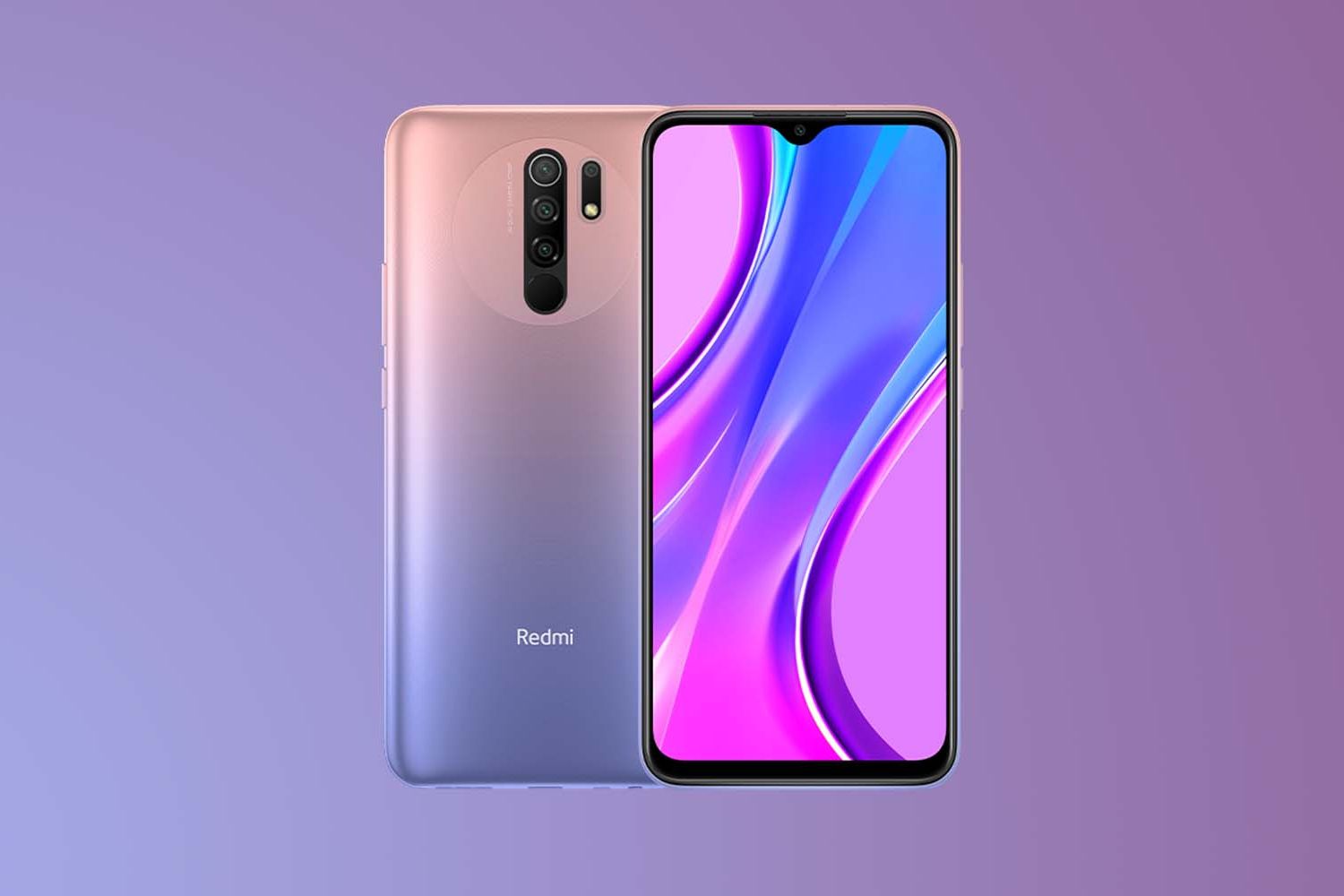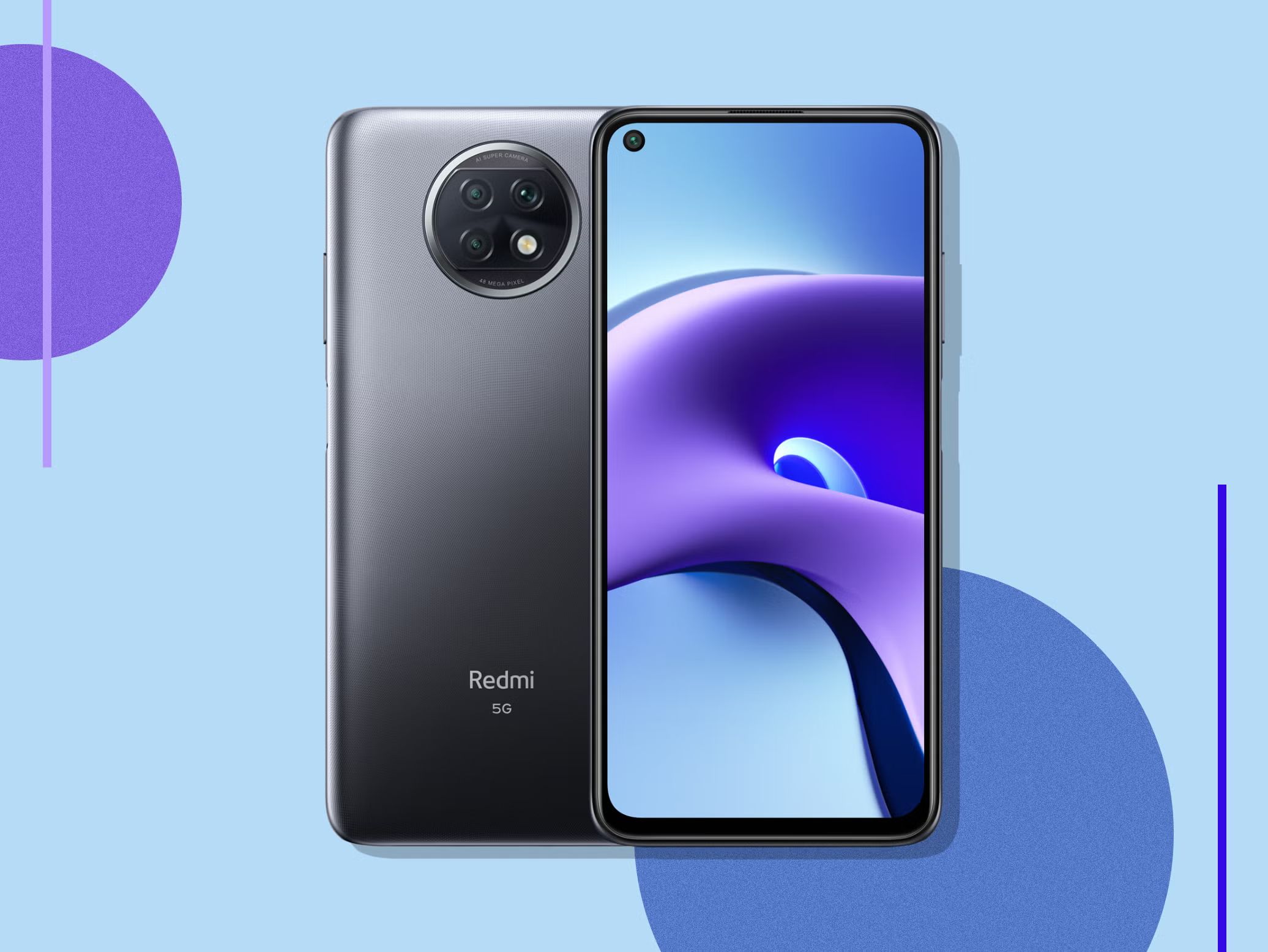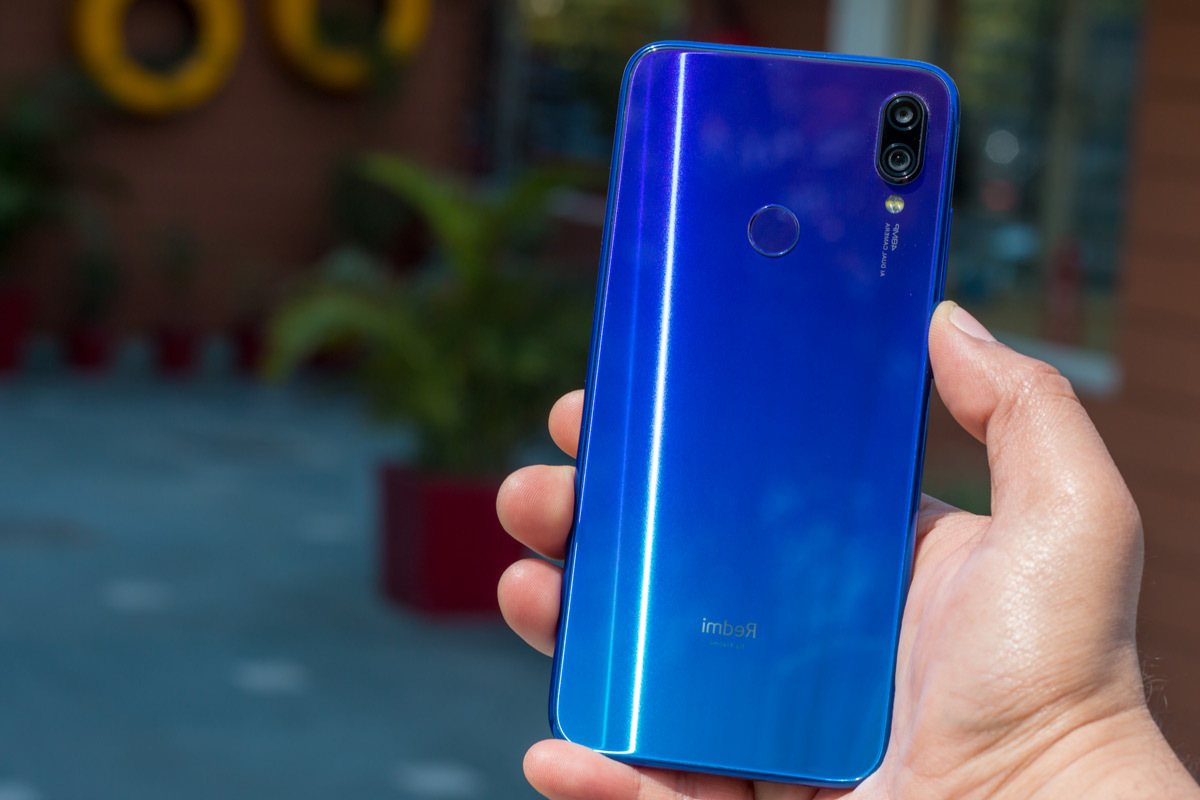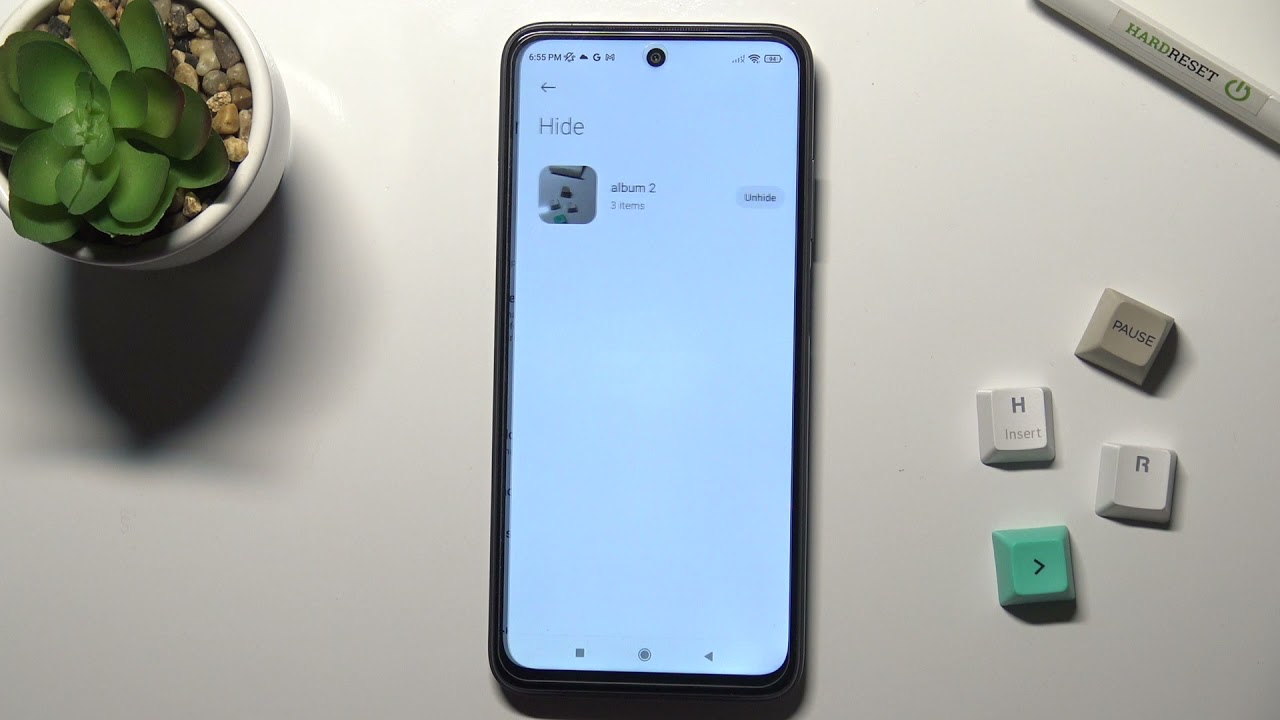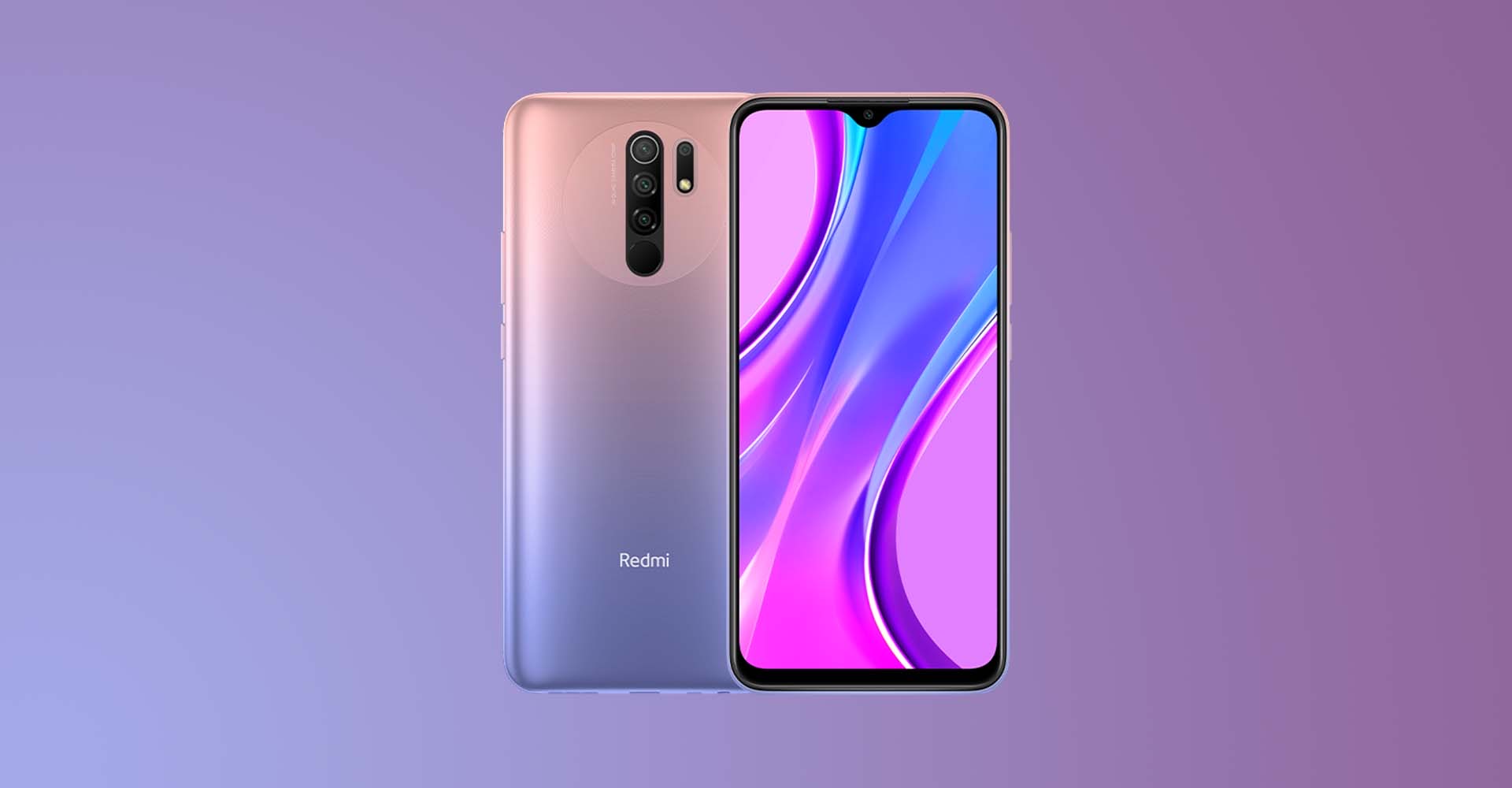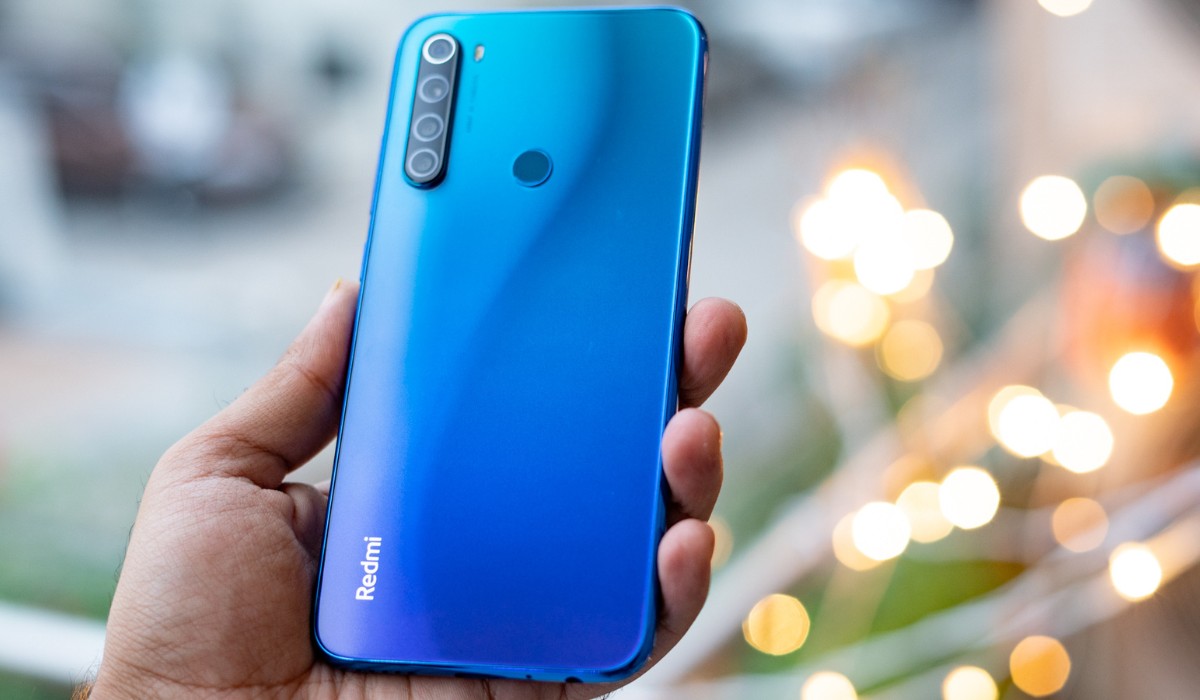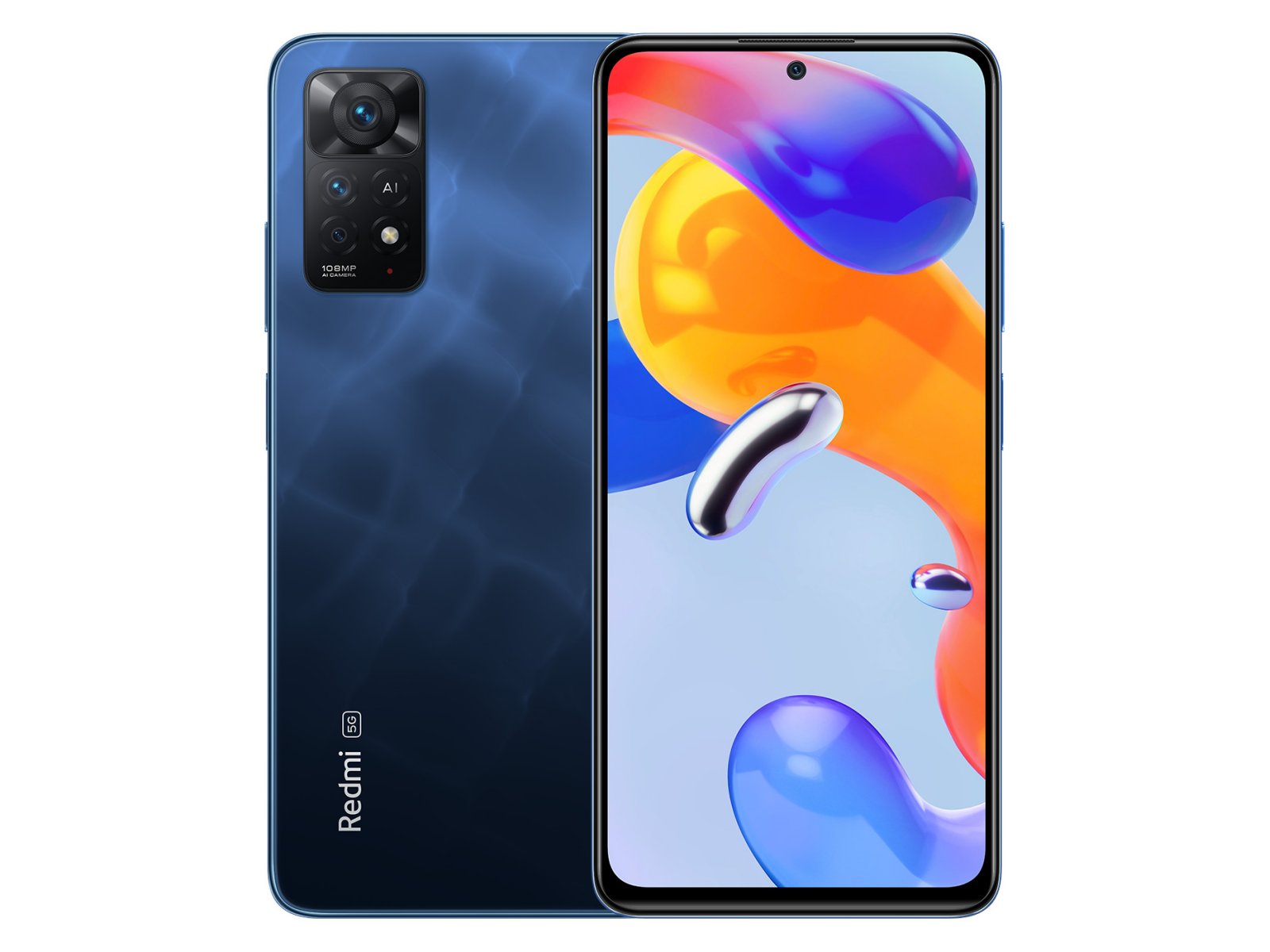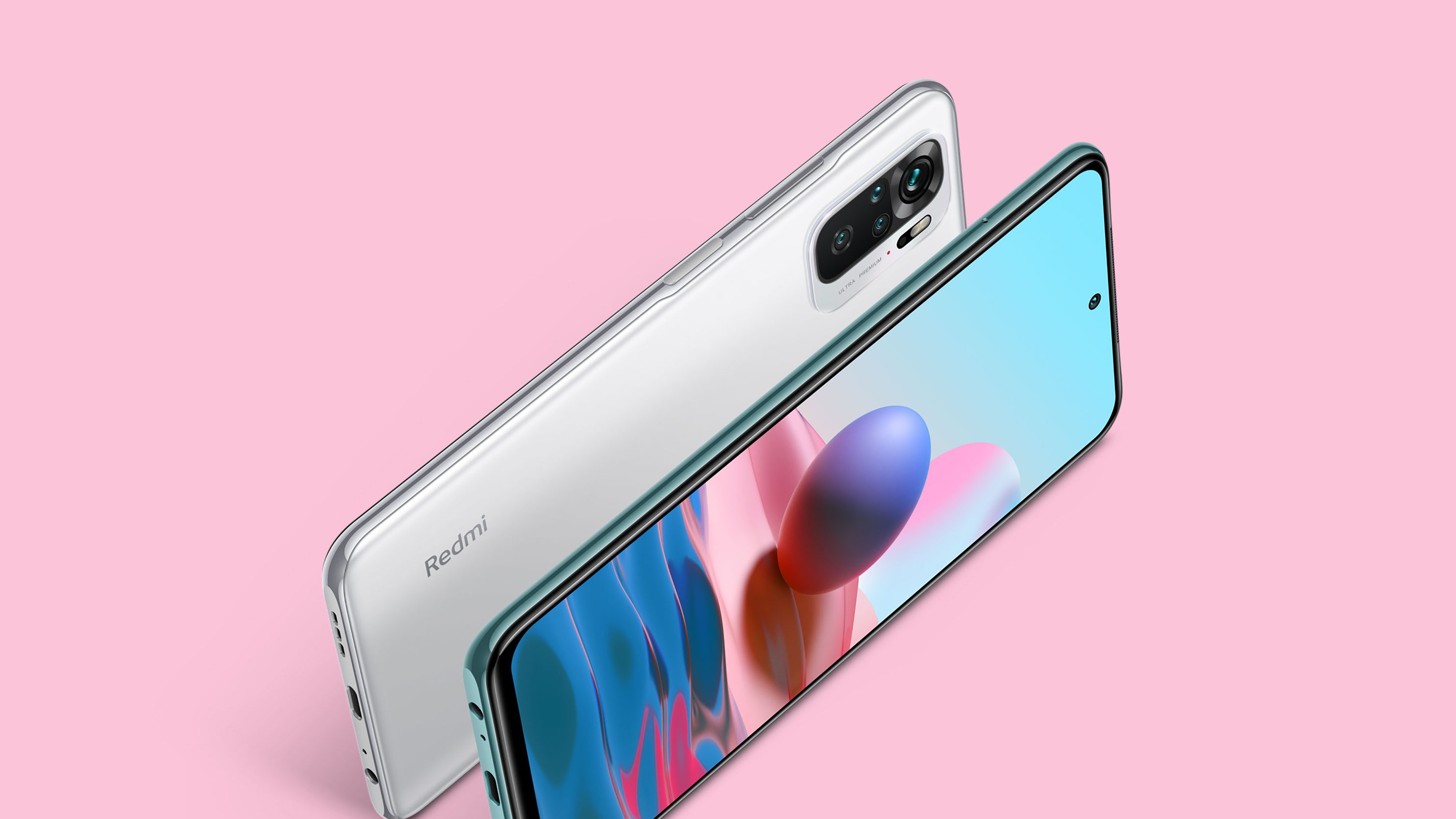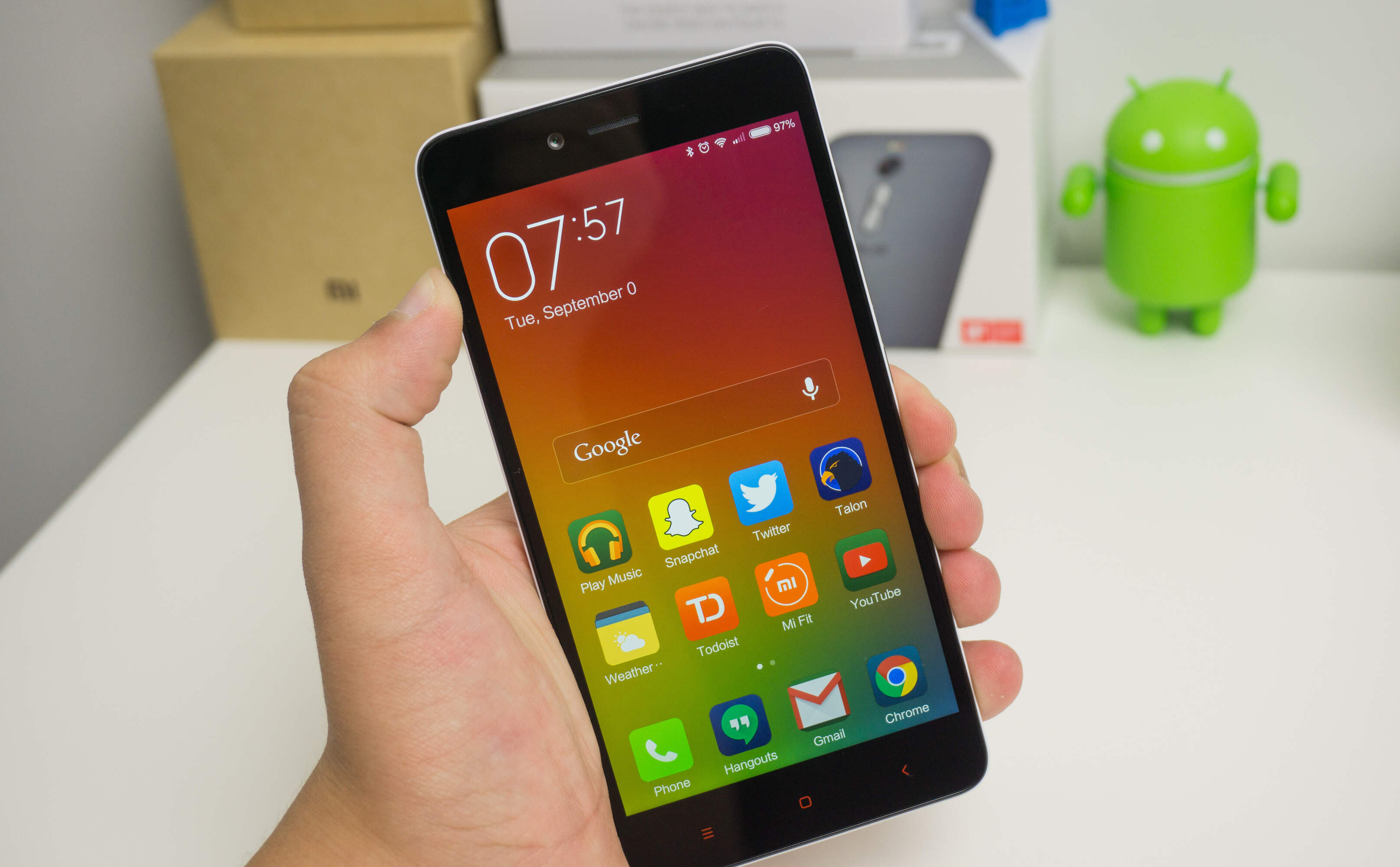Introduction
In today's fast-paced digital world, our mobile devices have become an integral part of our daily lives. From capturing precious moments to storing important documents, our smartphones hold a treasure trove of valuable data. However, the vulnerability of data loss due to accidental deletion, device malfunction, or theft is a constant concern for smartphone users. This is where the importance of regular backups comes into play.
For Redmi phone users, understanding the various methods of backup and restoration is crucial to safeguarding their data and ensuring a seamless mobile experience. Whether it's preserving cherished photos, safeguarding contacts, or securing vital documents, having a reliable backup system in place is paramount.
In this comprehensive guide, we will delve into the intricacies of Redmi phone backup, exploring the various methods available to users. From utilizing built-in features such as Mi Cloud to leveraging third-party apps, we will uncover the best practices for creating and restoring backups. By mastering the art of Redmi phone backup, users can gain peace of mind knowing that their valuable data is secure and easily recoverable in the event of unforeseen circumstances.
As we embark on this journey to demystify the world of Redmi phone backup, users will gain valuable insights and practical knowledge to empower them in safeguarding their digital assets. Let's dive into the realm of data protection and preservation, ensuring that Redmi phone users are equipped with the tools and know-how to master the art of backup.
Understanding Redmi Phone Backup
Understanding the intricacies of Redmi phone backup is the first step towards safeguarding valuable data and ensuring a seamless mobile experience. A backup is essentially a duplicate copy of essential data stored on a separate medium, serving as a fail-safe in the event of data loss or device failure. For Redmi phone users, comprehending the significance of backup and the available methods is crucial in preserving cherished memories, safeguarding critical information, and maintaining a smooth digital workflow.
Redmi phones, like many modern smartphones, offer users a variety of options to create backups, ranging from built-in features to third-party applications. These backups typically encompass a wide array of data, including contacts, messages, photos, videos, app data, and more. By understanding the scope of data that can be backed up, users can ensure comprehensive protection for their digital assets.
Moreover, comprehending the distinction between local backups and cloud backups is essential. Local backups are stored on the device's internal storage or external memory card, providing quick access to data for restoration. On the other hand, cloud backups utilize remote servers to store data, offering the advantage of accessibility from any compatible device with an internet connection. Understanding the pros and cons of each backup method empowers users to make informed decisions based on their specific needs and preferences.
In addition, recognizing the importance of regular backups and the potential consequences of data loss is paramount. Whether it's accidental deletion, hardware failure, or software issues, the risk of losing valuable data is ever-present. By understanding the potential scenarios that could lead to data loss, users can appreciate the significance of proactive backup practices and the peace of mind it brings.
By delving into the nuances of Redmi phone backup, users can gain a deeper understanding of the available options and the importance of data preservation. This knowledge forms the foundation for implementing effective backup strategies, ensuring that valuable data remains secure and easily recoverable. As we continue to explore the methods and best practices for Redmi phone backup, users will be equipped with the insights and expertise to master the art of data protection and preservation.
Methods of Redmi Phone Backup
When it comes to Redmi phone backup, users have access to a range of methods to safeguard their valuable data. Understanding these methods is essential for creating a comprehensive backup strategy tailored to individual needs. Let's explore the primary methods available for Redmi phone backup:
1. Using Mi Cloud for Backup
Mi Cloud, Xiaomi's proprietary cloud storage service, offers a convenient and secure platform for backing up essential data from Redmi phones. Users can seamlessly synchronize contacts, messages, call logs, photos, and more to Mi Cloud, ensuring that their data is safely stored on remote servers. This method provides the advantage of accessibility from any compatible device, enabling users to restore their data effortlessly.
2. Using Google Account for Backup
Redmi phone users can leverage their Google account to create backups of various data, including contacts, calendar events, app data, and device settings. By enabling Google's backup and sync features, users can ensure that their data is securely stored in the cloud, ready for restoration when needed. This method offers seamless integration with Google's ecosystem and provides a reliable backup solution for Redmi phone users.
3. Using Third-Party Apps for Backup
In addition to built-in backup features, Redmi phone users can explore third-party apps available on the Google Play Store to create comprehensive backups. These apps offer a wide range of functionalities, allowing users to back up contacts, messages, photos, videos, and app data to external storage or cloud services of their choice. With the flexibility and customization options provided by third-party apps, users can tailor their backup strategy to meet their specific requirements.
By understanding and utilizing these methods, Redmi phone users can establish a robust backup system to protect their valuable data. Each method offers unique advantages, and users can combine multiple approaches to create redundant backups, further enhancing the security of their digital assets. As we delve deeper into the realm of Redmi phone backup, it becomes evident that a proactive and multi-faceted approach is key to mastering the art of data protection and preservation.
Using Mi Cloud for Backup
Mi Cloud serves as a robust and user-friendly platform for Redmi phone users to safeguard their essential data through seamless backup functionality. This proprietary cloud storage service, offered by Xiaomi, provides a secure and convenient way to store and synchronize a wide array of data, ensuring that users can access their information from any compatible device with ease.
One of the key advantages of using Mi Cloud for backup is its seamless integration with Redmi phones, offering a native solution that simplifies the backup process. Users can effortlessly synchronize their contacts, messages, call logs, photos, videos, and more to Mi Cloud, ensuring that their data is securely stored on remote servers. This not only provides a layer of protection against data loss due to device issues but also enables users to access their data from any internet-connected device, offering unparalleled convenience.
Furthermore, Mi Cloud offers customizable backup settings, allowing users to select specific types of data for synchronization. This level of flexibility empowers users to tailor their backup strategy according to their preferences, ensuring that only the most essential data is stored in the cloud. Additionally, Mi Cloud's seamless synchronization ensures that any changes or additions to the selected data are promptly updated across devices, maintaining data consistency and accessibility.
The security of data stored in Mi Cloud is a top priority, with Xiaomi implementing robust measures to protect user information. Advanced encryption protocols and secure data centers contribute to a safe and reliable backup environment, instilling confidence in users regarding the privacy and integrity of their data.
In the event of a device upgrade, replacement, or data loss, restoring data from Mi Cloud is a straightforward process. Redmi phone users can easily retrieve their backed-up data, ensuring a smooth transition to a new device or the recovery of lost information. This seamless restoration process adds a layer of reassurance, knowing that valuable data is readily available when needed.
By leveraging Mi Cloud for backup, Redmi phone users can establish a comprehensive and secure data protection strategy. The seamless synchronization, customizable settings, and robust security measures offered by Mi Cloud empower users to safeguard their digital assets with confidence, ensuring that their data remains accessible and recoverable in any situation.
Using Google Account for Backup
Utilizing a Google account for backup purposes offers Redmi phone users a seamless and reliable method to safeguard their essential data. Google's ecosystem provides a comprehensive backup and sync feature that enables users to store a wide range of information securely in the cloud, ensuring accessibility and recoverability across devices.
By leveraging their Google account, Redmi phone users can back up crucial data such as contacts, calendar events, app data, and device settings. This inclusive approach ensures that a diverse array of information is securely stored, ready for restoration whenever the need arises. The integration of Google's backup and sync features with Redmi phones streamlines the backup process, offering users a familiar and intuitive platform to safeguard their digital assets.
One of the key advantages of using a Google account for backup is the seamless synchronization of data across devices. This means that any changes or additions to the backed-up data are promptly updated in the cloud, ensuring data consistency and accessibility from any compatible device linked to the user's Google account. This level of synchronization enhances the user experience, providing a unified and seamless approach to data backup and restoration.
Furthermore, Google's robust security measures contribute to the integrity and privacy of the backed-up data. Advanced encryption protocols and secure cloud storage facilities ensure that user information is protected against unauthorized access, instilling confidence in the security of the backup environment. This emphasis on data security aligns with Google's commitment to safeguarding user privacy and information.
In the event of a device transition or data loss, restoring data from a Google account is a straightforward process. Redmi phone users can effortlessly retrieve their backed-up data, facilitating a smooth transition to a new device or the recovery of lost information. This streamlined restoration process adds a layer of reassurance, ensuring that valuable data is readily available when needed.
By leveraging their Google account for backup, Redmi phone users can establish a robust and versatile data protection strategy. The seamless synchronization, comprehensive backup options, and stringent security measures offered by Google's ecosystem empower users to safeguard their digital assets with confidence, ensuring that their data remains accessible and recoverable in any situation.
Using Third-Party Apps for Backup
In addition to the built-in backup features provided by Redmi phones, users have the option to explore a diverse range of third-party apps available on the Google Play Store for creating comprehensive backups. These apps offer a myriad of functionalities, allowing users to back up contacts, messages, photos, videos, app data, and more to external storage or cloud services of their choice.
The flexibility and customization options provided by third-party backup apps empower users to tailor their backup strategy to meet their specific requirements. Whether it's the need for automated scheduled backups, selective data backup, or the ability to store data on preferred cloud platforms, third-party apps offer a wide array of features to cater to diverse user preferences.
Furthermore, third-party backup apps often provide additional functionalities such as cross-platform compatibility, allowing users to seamlessly transfer and restore data across different devices and operating systems. This level of versatility ensures that users are not limited to a single ecosystem, offering greater flexibility in managing their backups.
Many third-party backup apps also incorporate advanced encryption and security measures to protect user data, ensuring that sensitive information remains secure during the backup and storage process. This emphasis on data security aligns with the growing importance of privacy and confidentiality in the digital age, providing users with peace of mind regarding the protection of their valuable data.
Moreover, the user-friendly interfaces and intuitive backup settings of third-party apps contribute to a seamless and hassle-free backup experience. Whether it's the ability to initiate backups with a single tap or the option to customize backup schedules and preferences, these apps prioritize user convenience, making the backup process straightforward and accessible to users of all levels of technical expertise.
By leveraging third-party apps for backup, Redmi phone users can augment their data protection strategy with additional features and customization options. The diverse functionalities, robust security measures, and user-friendly interfaces offered by third-party backup apps empower users to create tailored and resilient backup solutions, ensuring the preservation and recoverability of their valuable digital assets.
Restoring Data from Backup
Restoring data from a backup is a crucial aspect of the backup process, as it ensures that users can recover their valuable information in the event of device transition, data loss, or unforeseen circumstances. For Redmi phone users, the seamless restoration of backed-up data is essential for maintaining a smooth digital workflow and preserving important information.
When it comes to restoring data from backup on Redmi phones, users have access to intuitive and streamlined processes that simplify the retrieval of backed-up information. Whether the data is stored in Mi Cloud, linked to a Google account, or backed up using third-party apps, the restoration process is designed to be user-friendly and efficient.
For users who have backed up their data to Mi Cloud, restoring the information to a new or reset device involves a few simple steps. By signing in to the Mi Cloud account on the new device and initiating the restoration process, users can seamlessly retrieve their contacts, messages, call logs, photos, videos, and more. This streamlined approach ensures that the transition to a new device is smooth and hassle-free, with the restored data reflecting the latest updates and changes.
Similarly, for users who have utilized their Google account for backup purposes, restoring data involves signing in to the same Google account on the new or reset device and enabling the backup and sync features. This prompts the device to retrieve the backed-up data from the user's Google account, ensuring that contacts, calendar events, app data, and device settings are seamlessly restored to their latest state.
In the case of third-party backup apps, the restoration process typically involves accessing the app's interface on the new device, selecting the desired backup, and initiating the restoration procedure. These apps often offer user-friendly interfaces and intuitive restoration options, ensuring that users can effortlessly retrieve their backed-up data with minimal effort.
Overall, the restoration of data from backup on Redmi phones is designed to be user-centric, prioritizing simplicity and accessibility. By following the intuitive steps provided by the backup methods, users can ensure that their valuable data is readily available when needed, facilitating a seamless transition and preserving important information with ease.
Best Practices for Redmi Phone Backup
Ensuring the effectiveness of Redmi phone backup involves embracing best practices that prioritize data protection, accessibility, and seamless restoration. By implementing the following best practices, users can establish a robust backup strategy tailored to their specific needs and preferences.
-
Regular Backup Schedule: Establishing a regular backup schedule is essential to ensure that data remains current and up to date. Whether it's a daily, weekly, or monthly backup routine, consistency is key to preserving the latest information and minimizing the risk of data loss.
-
Diversified Backup Methods: Embrace diversified backup methods, such as utilizing both Mi Cloud and Google account backups, to create redundant copies of essential data. This approach enhances data security and ensures multiple avenues for data restoration.
-
Selective Data Backup: Prioritize selective data backup by focusing on essential information such as contacts, messages, photos, and critical app data. This approach streamlines the backup process and optimizes storage space while ensuring that vital data is safeguarded.
-
Encryption and Security: Prioritize backup solutions that offer advanced encryption and robust security measures to protect sensitive information. This emphasis on data security enhances user confidence in the integrity and privacy of their backed-up data.
-
Regular Data Verification: Periodically verify the integrity of backed-up data to ensure that the information is complete and accessible for restoration. This proactive approach mitigates the risk of potential data corruption or incomplete backups.
-
Device Transition Preparedness: Anticipate device transitions by ensuring that backed-up data is readily accessible for seamless restoration to a new device. This proactive approach facilitates a smooth transition and minimizes downtime during the device upgrade process.
-
Education and Awareness: Educate users about the importance of backup practices and raise awareness about the available backup methods and their benefits. Empowering users with knowledge fosters a proactive approach to data protection and preservation.
By embracing these best practices, Redmi phone users can establish a comprehensive and resilient backup strategy that prioritizes data security, accessibility, and seamless restoration. This proactive approach ensures that valuable data remains safeguarded and readily available, empowering users to navigate device transitions and unforeseen circumstances with confidence.
Conclusion
In conclusion, mastering the art of Redmi phone backup is essential for safeguarding valuable data, preserving cherished memories, and ensuring a seamless mobile experience. Throughout this comprehensive guide, we have explored the intricacies of Redmi phone backup, delving into the available methods, best practices, and the significance of data protection and preservation.
By understanding the various methods of Redmi phone backup, including utilizing Mi Cloud, leveraging Google accounts, and exploring third-party apps, users can establish a robust backup strategy tailored to their specific needs. The seamless integration of these backup methods with Redmi phones empowers users to safeguard a diverse array of data, ranging from contacts and messages to photos, videos, and app data.
Furthermore, the best practices outlined in this guide emphasize the importance of regular backup schedules, diversified backup methods, selective data backup, encryption, and security measures, as well as device transition preparedness. By embracing these best practices, users can ensure that their valuable data remains secure, accessible, and readily available for restoration in any situation.
As technology continues to evolve and play an increasingly integral role in our lives, the importance of data protection and preservation cannot be overstated. Redmi phone users are encouraged to proactively implement the insights and best practices shared in this guide, empowering them to navigate device transitions, unforeseen circumstances, and potential data loss with confidence.
Ultimately, mastering Redmi phone backup is not merely a technical endeavor but a proactive approach to safeguarding cherished memories, critical information, and digital assets. By embracing the knowledge and strategies presented in this guide, Redmi phone users can embark on their digital journeys with the assurance that their valuable data is secure, accessible, and easily recoverable.
In the dynamic landscape of mobile technology, the mastery of Redmi phone backup is a testament to users' proactive commitment to data protection and preservation. As we conclude this guide, the empowerment of Redmi phone users in mastering the art of backup serves as a testament to the resilience and adaptability of modern digital practices.







